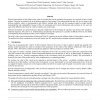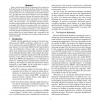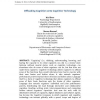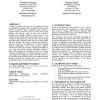1106 search results - page 17 / 222 » Software That Can Think and Do |
STANDARDVIEW
1998
13 years 7 months ago
1998
Network externalities are the effects on the value of a product that can be ascribed to the presence of a network of users of such product. They play an essential role in the busi...
IPPS
1996
IEEE
13 years 11 months ago
1996
IEEE
Brewer and Kuszmaul [BK94] demonstrated how barriers and traffic interleaving can alleviate the problem of bulk-transfer performance degradation on the Thinking Machines CM-5, by ...
CORR
2008
Springer
13 years 7 months ago
2008
Springer
: "Cognizing" (i.e., thinking, understanding, knowing, and having the capacity to do what cognizers can do) is a mental state. Systems without mental states, such as cogn...
AMR
2007
Springer
14 years 1 months ago
2007
Springer
This paper is a critical analysis of the use of ontology as an instrument to specify the semantics of a document. The paper argue that not only is a logic of the type used in ontol...
BCSHCI
2008
13 years 8 months ago
2008
Customer satisfaction with regard to user interfaces becomes increasingly more important and is, eventually, decisive for the selection of systems within a competitive market. End...




